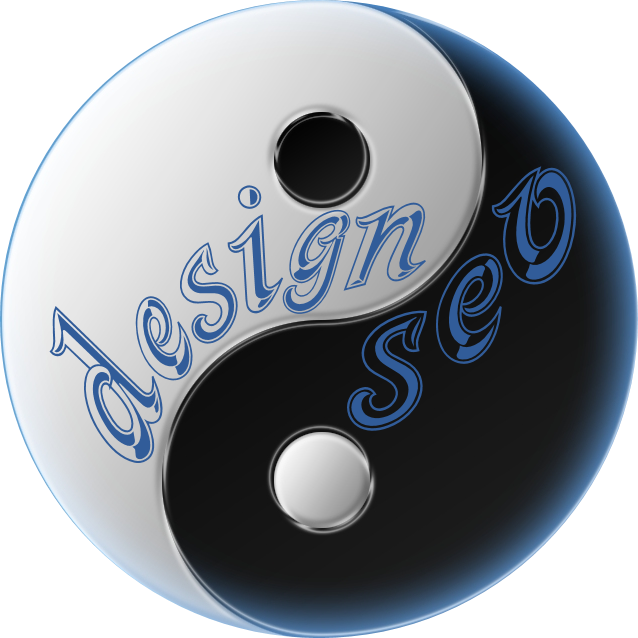
Explaining SEO to Clients:
The Fishing Metaphor
By Charles Moffat - November 2010, updated June 2011.
Some people have little or no understanding of Search Engine Optimization (commonly known as SEO) and how it works. One way to explain it is to start off with a metaphor, in this case a fishing metaphor so it is termed in a way that clients can easily understand.
The goal of SEO is to get to the top of the search engine results page for specific keywords. Why is this important? Because 45% to 65% (exact statistic varies depending on search engine) of people searching click on the top link. Even Google AdWords can't compete with that (the top ad gets only 8% on average). To use the fishing metaphor that top spot is the best place to fish and you want it all to yourself.
But how do you get to that top spot and claim it as your own?
SEO Methodology
#1. Content - If you want to catch lots of fish you're going to need a larger boat. Likewise a larger website is a necessity when getting lots of visitors. A larger website = Lots of content. Content is effectively Bait. You need something that is going to attract the fishes. This bait is written content, advice, images, videos, forums, FAQ, etc. The more content the better.
#2. Keywords - Content should be keyword rich. Your bait should be juicy, enjoyable and the fishes will want to stick around and enjoy it long enough for you catch them.
#3. Target Audience - You can't just fish anywhere. You have to go to where they are, bait them directly. You advertise on specific websites to your chosen audience, especially websites which are on topic.
#4. Location - You can't just fish in one spot only. You have to cast a wide net and bait the fishes in multiple locations, but always try to THINK LOCAL. You can't catch fishes on the opposite side of the world. You are creating a network of links to your website so lots of people can find it easily and its better to be on the local websites.
#5. Popularity - You want to do two things: You are after a specific type of fish and you want lots of them. Therefore you need to focus on websites that are popular for that specific type of person.
At this point the person explaining SEO to the client should draw multiple overlapping bubbles. The part where they intersect should be the largest of them all. (An alternative to drawing overlapping bubbles is a 5 pointed star.)
The exterior of the bubbles should be labeled: Content, Popularity, Keywords, Location, Target Audience. If the client adds an extra bubble they think is important, indulge them and draw that one too providing it makes sense. (If you are using the star version, use two inverted triangles to make a six-pointed Star of David.)
Next write SEO in the big middle part where all the bubbles intersect.
Explain the following to the client using your own words:
Regardless of the techniques used SEO all comes down to targeted links, preferably on popular websites, which are (hopefully) on topic for the target audience. If you are advertising a shoe repair company in Toronto then "shoe repair Toronto" are the words you will be focused on, you will want a website with lots of information about shoe repair, and you will want to be advertising on websites which markets shoes, presumably to the type of people who get their shoes repaired and most importantly, websites either about or located in Toronto, Canada. (As you explain this move the pen from bubble to bubble for emphasis.)
Now don't stop here however. Next explain that you repeat the process on a multitude of websites and draw larger bubbles around existing bubbles (or larger stars overlapping the first star) and that over the years this network of websites grows and pretty soon their website is dominating the market.
Terminology
Next you should explain several terms. You may need to explain these earlier in the conversation if your client doesn't understand some of the words you are using. You may even want to refer them to a glossary so they can learn more terms if they are very curious.
#1. Black Hat SEO - These are disreputable techniques which some people use to gain popularity, such as spamming links, spam bots, pop ups, improper redirects, keywords stuffing, google bombs, etc. Using such techniques can get a website lowered or even banned from a search engine's database and therefore are not recommended. Professional SEO experts only use White Hat techniques.
#2. Blogging - Blogs or "web logs" are effectively online diaries which bloggers write on a daily or weekly basis, often with news items, commentary, advice or personal reviews of products. People often find blogs more enjoyable to read because they're more personal and opinionated. Because they are so personal and updated regularly blog posts count for DOUBLE when doing SEO. (Forums and message boards are likewise popular.)
#3. Keywords - Commonly used words or phrases used to describe a particular topic. ie. House, home, executive, estate, detached, single family, exclusive, high end, ravine, premier, community, custom, etc.
#4. Links - We all know what links are, but they are the foundation upon which SEO is dependent upon. The more links the better, but its even more important that these links be targeted using specific keywords and be on websites which are on topic. Popularity is also a huge factor. A link on a popular PageRank 5 website is worth approximately 450 links on PageRank 1 websites.
#5. PageRank - This is a measurement of website popularity as calculated by Google on a scale of 0 to 10 and is exponential. ie. PageRank 2 is five times more popular than 1, PageRank 3 is 25 times more popular, etc. ie. YorkU.ca is PR 8, NewInHomes.com is PR 7, OntarioFishing.ca is PR 3. Small companies can expect to pull off a PageRank of 2 to 5 if they work continuously at their SEO, but they can't expect to be competing with larger companies like GeneralMills.com which is PageRank 6.
#6. SEM - Search Engine Marketing is very different from SEO. Please do not confuse the two. SEM is about advertising at the top of search engine results for specific keywords, via Google AdWords and other programs. SEM does NOTHING to boost a website's PageRank or SEO status.
#7. Social Media - Websites like Facebook, Twitter, etc. can be good for communicating with potential customers because it gives them more privacy and control. However these sites have limited SEO effect unless the pages in question are actually popular. (The same rules for PageRank applies to social media websites. If the Facebook page or group isn't a popular one it doesn't really count for much. Social Media websites are more useful for posting updates and communicating with fans/followers. Social Media has the potential to go viral if its a news item, but that doesn't really work for advertising.)
#8. Viral Marketing - Attempting a viral marketing campaign is a long shot, but what you want to do is something which is either: Funny, Controversial or both. Usually involving a video on YouTube which has been carefully crafted to garner attention and get people talking about it and sharing it with their friends via word-of-mouth. If its not the type of video that will be shared then it definitely won't go viral.
Conclusions
So what do SEO experts actually do? They write and post links on a variety of websites, including blogs, forums, message boards, link directories, bookmarking websites, social media websites, research/academic websites, online magazines, and so forth. They also (if they have the budget for it) buy links on popular websites and even hire bloggers to write blog posts about specific websites. Their primary goals in this is to boost PageRank, boost keyword visibility and get the website they are promoting to the top of the search engine listing for those keywords.


